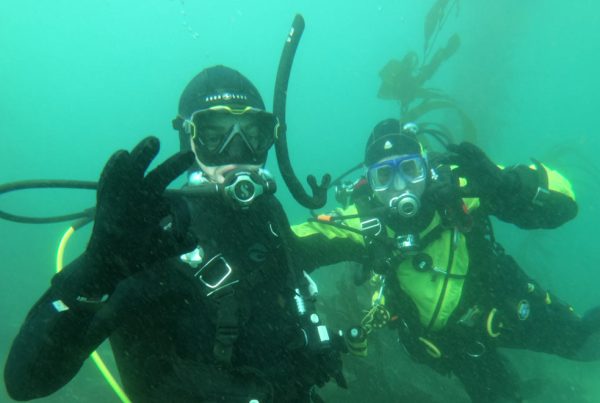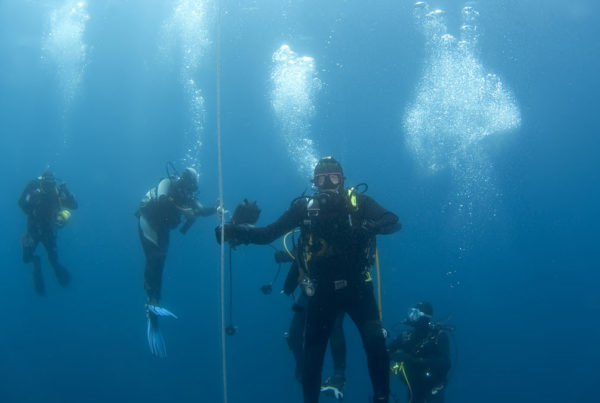Has the water been just a bit too chilly for you lately? The ultimate way to stay warm is with a good quality dry suit or a custom made wetsuit with superior materials and the right configuration. But maybe you already have a good wetsuit or you just need to take the edge off the chill. There are things you can do to stay warmer and more comfortable on your next dive trip that are simple, easy and inexpensive. And if you stay warm you’ll dive more with increased comfort and, ultimately, be a safer diver.
LEAVE YOUR SUIT ON
Thermal protection in the water is simply a matter of trapping air (dry suit) or a thin layer of water (wetsuit) between your skin and insulating suit material. Your body then heats this air or water and you stay warm so long as the warm air or water does not escape only to be replaced by cold air or water that has to be heated again. Don’t take your suit off to allow this to happen. This is especially important with wetsuits. Every time you allow that warm water to escape by removing your suit, it has to be replaced with cold water that your body must heat again. Removing your suit also exposes your skin to direct cooling from evaporation.
GET OUT OF THE WIND
Between dives, get out of the wind. Many divers are chilled more on deck in the wind than on the dives themselves. This goes for both dry suit and wetsuit divers (although it tends to affect wetsuit divers more). Evaporation of moisture off the suits can severely drain a diver of warmth, even through a good suit.
PUT ON A JACKET
A full thigh-length oversized jacket is especially helpful. An extra-large jacket can be worn directly over your suit. There are jackets sold at dives stores specially for this purpose. They break the wind and their linings are of a special material that will keep you warm even when damp. But any jacket will work to a degree.
LAYER
For wetsuit divers, I think the hooded vest is one of the best things ever invented. You can either get them extra-large to fit over the outside of your current suit, or fitted to your body to work under your suit. The attached hood keeps cold water from running down your neck and the added thermal protection is right where it is most critical—in the torso, neck and head. This is your best step up from an ordinary hood. And best of all, hooded vests are generally inexpensive, especially when compared to the large thermal advantages gained.
Another layering option is a “skin” under your existing suit. If you choose this option, pick a skin with good thermal properties. Henderson makes a jumpsuit of very thin neoprene known as microprene that effectively adds 1 mil thickness to any suit.
SEAL YOUR WETSUIT
Anytime warm water is allowed to escape your wetsuit, coldwater moves in to replace it. Warm water must be sealed in. Areas where this most often happens is in the wrist and ankles. Seals can be added simply by closing off these critical points. At the ankles, straps can be used (one ankle often already has a strap on it from a knife sheath). At the wrists, use gloves that have gauntlets that reach over the wrists of the wetsuit that straps that can secure snugly against the wetsuit wrists.
DO NOT URINATE IN YOUR WETSUIT
Urinating in your wetsuit may give you the sensation of being warm but your body is actually loosing heat in the process. Also, dumping hot water down your suit before or between dives may be counter productive. Your body senses the heat and opens capillaries in the skin. Once back in the cold water, much more warm blood is exposed to the cold water and the body is chilled more rapidly. If you want to go this route, use tepid (mildly warm) water rather than hot water before or between dives.










